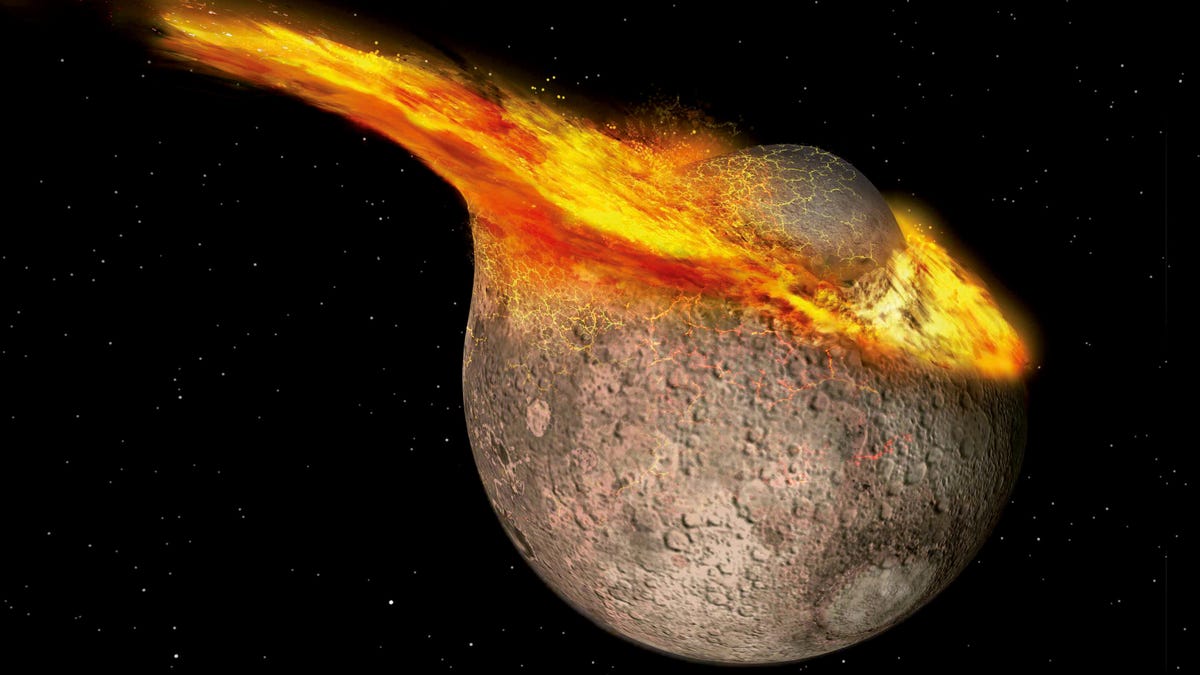The moon is younger than we thought
New research into the moon's gnarly "magma ocean" has yielded interesting results.

The moon's origin story is metal as anything.
The fifth biggest satellite in our solar system, Earth's beloved moon is thought to have been formed in the aftermath of a gigantic collision between Earth and a Mars-sized ancient planet called "Theia." A metal origin story for sure, but additional details about its formation have surfaced, and it looks like early researchers might have got the origin story of our moon a little bit wrong.
According to a new study, published in the journal Science Advances on Friday, the moon is actually 85 million years younger than we once thought.
The age of the moon is a contested topic. As recently as 2017 a study from UCLA researchers declared that the moon was older than we once thought. Back then, the team suggested the moon was 4.51 billion years old, having formed just 60 million years after the formation of our solar system.
But new research, undertaken by researchers at the German Aerospace Center, pushes the moon's formation back to 4.425 billion years ago. It seems like a small difference in perspective, but 85 million years is a long time in anyone's book.
To determine the age, scientists used a new computer model, designed to more accurately examine how long it took the moon's gigantic magma ocean to cool and crystalize. Yep, that's right. The moon was once home to a gigantic magma ocean.
"The results from the model show that the Moon's magma ocean was long-lived and took almost 200 million years to completely solidify into mantle rock," says Maxime Maurice, the scientist who led the study.
"The time scale is much longer than calculated in previous studies," added Nicola Tosi, a co-author of the study. "Older models gave a solidification period of only 35 million years."
Which also means that the moon played host to a terrifying primordial magma ocean for longer than we once thought. Gnarly.

